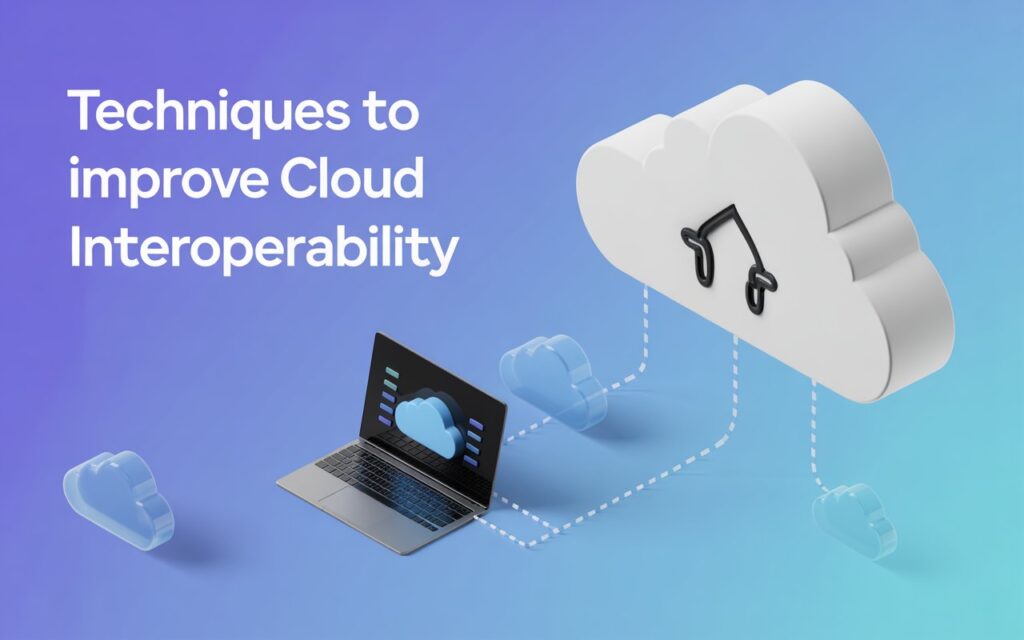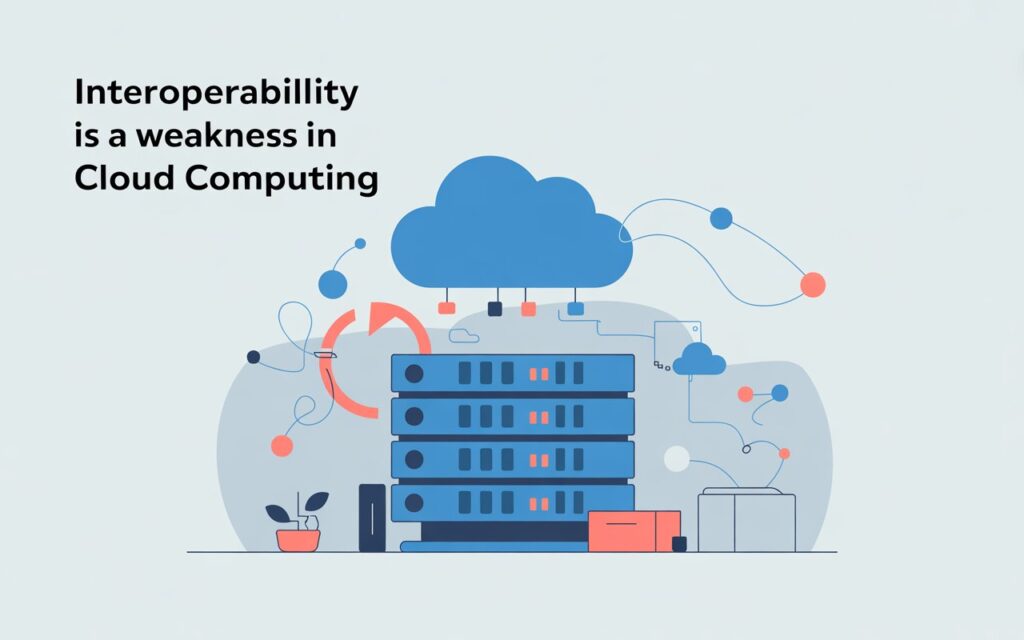- Introduction
- Understanding Interoperability in Cloud Computing
- Why Interoperability is a Weakness in Cloud Computing
- Impact of Weak Interoperability on Businesses
- Techniques to Improve Cloud Interoperability
- Future of Interoperability in Cloud Computing
- Collaborative Solutions
- Conclusion
- FAQ: Interoperability in Cloud Computing
Introduction
Cloud computing has changed the way we store, share, and use data. But while it offers speed, flexibility, and cost savings, it is not without challenges. One of the biggest concerns is interoperability, the ability of different cloud systems to work together smoothly.
Many experts believe that interoperability is a weakness in cloud computing because moving data between providers, integrating services, and avoiding vendor lock-in are harder than they seem. Understanding why this is an issue can help businesses and users make smarter decisions about their cloud strategies.
Understanding Interoperability in Cloud Computing
What is Interoperability in Cloud Computing?
Interoperability means that different cloud services and platforms can connect and share data easily. For example, if you want to move data from Amazon Web Services (AWS) to Microsoft Azure, you would expect it to work smoothly.
Why is Interoperability Important?
Interoperability matters because businesses often use more than one cloud provider. They need these systems to work together for better productivity and cost savings. Without it, companies may face problems like slow data transfers or higher expenses.
Bridging Cloud Services
When cloud platforms connect properly, it is easier to run apps across different systems. For example, a company might use Google Cloud for data storage and AWS for machine learning. Interoperability allows both systems to work hand in hand.
Data Portability
Data portability is the ability to move data freely between different services. Without it, businesses risk being stuck with one provider. This is known as vendor lock-in.
Enhanced Functionality
When systems can work together, businesses can combine the strengths of different providers. This leads to better performance, flexibility, and innovation.
Why Interoperability is a Weakness in Cloud Computing
The Complexity of Cloud Ecosystems
Each cloud provider builds its system differently. These differences create barriers that make it hard for one service to connect with another.
Security Concerns
Connecting multiple cloud platforms can open security gaps. If one system has weaker defenses, it can put the whole network at risk.
Performance Bottlenecks
Moving data between cloud providers can cause slowdowns. Large files, for example, may take longer to transfer, which reduces efficiency.
Vendor Lock-In Issues
Many providers design their systems so that customers rely heavily on them. This makes switching to another provider expensive and complicated.
Impact of Weak Interoperability on Businesses
Reduced Agility and Innovation
When businesses cannot move data freely or use multiple providers easily, they lose flexibility. This slows down innovation.
Increased Operational Costs
Extra work is often needed to make different systems connect. This means higher costs for setup, maintenance, and staff training.
Data Management Challenges
Without strong interoperability, businesses may have to duplicate data or use complicated tools to manage it. This increases the risks of errors and data loss.
Limited Scalability
Scalability is the ability to grow quickly when demand increases. Weak interoperability makes it harder for businesses to expand smoothly across different cloud platforms.
Techniques to Improve Cloud Interoperability

Standardization Efforts
Industry groups are working on creating shared standards so that systems can connect more easily. This includes standard formats for data exchange.
API Integration
Application Programming Interfaces (APIs) act like bridges between different systems. APIs allow apps to share data across platforms in a safer way.
Cloud Brokerage Services
These are third-party services that help businesses manage multiple clouds. They act as middlemen, making it easier for companies to connect different platforms.
Best Practices for Enterprises
Businesses should plan carefully before choosing cloud providers. Selecting those that support open standards and multi-cloud strategies helps avoid future problems.
Future of Interoperability in Cloud Computing

Edge Computing and IoT Integration
With more smart devices connected to the internet, interoperability between clouds will be essential. Edge computing will need strong connections with central cloud systems.
AI and Machine Learning for Cloud Automation
Artificial intelligence can help automate connections between clouds, reducing human errors and improving efficiency.
Hybrid and Multi-Cloud Strategies
Many businesses are choosing a hybrid model, using both private and public clouds. Interoperability will be key to making these models successful.
Potential Role of Quantum Computing
Quantum computing may change how data is processed and transferred. In the future, it could offer new ways to solve interoperability problems.
Collaborative Solutions
Role of Governments and Regulations
Governments may set rules that encourage providers to follow open standards. This would make it easier for businesses and users to switch between providers.
Industry Collaboration for Open Standards
Tech companies can work together to create shared guidelines. This helps reduce barriers between cloud platforms.
Continuous Learning and Adaptation
Since cloud technology is always changing, businesses must keep learning and adapting their strategies to stay ahead.
Conclusion
Interoperability is both a strength and a weakness in cloud computing. While it allows systems to connect and share data, weak interoperability creates challenges like higher costs, security risks, and vendor lock-in. By understanding these issues and applying best practices, businesses can use the cloud more effectively and prepare for the future.
FAQ: Interoperability in Cloud Computing
What does interoperability mean in cloud computing?
Interoperability means different cloud services can connect and share data easily. It allows businesses to use multiple providers without major problems.
Why is interoperability considered a weakness in cloud computing?
It is seen as a weakness because cloud systems are often built differently. This makes it hard for them to connect, leading to security risks, higher costs, and slow performance.
What are the main challenges of interoperability in cloud computing?
The main challenges are complex systems, weak security when connecting platforms, performance slowdowns, and vendor lock-in.
Is “interoperability is a weakness in cloud computing” true or false?
True. Interoperability is often considered a weakness because of the difficulties in connecting systems. However, new solutions are improving this problem.
How can businesses solve interoperability problems?
They can use APIs, open standards, cloud brokerage services, and hybrid cloud strategies to make systems work together more effectively.
What are the main security challenges in cloud computing?
The biggest challenges include data breaches, denial-of-service attacks, weak encryption, and risks when systems connect poorly.






